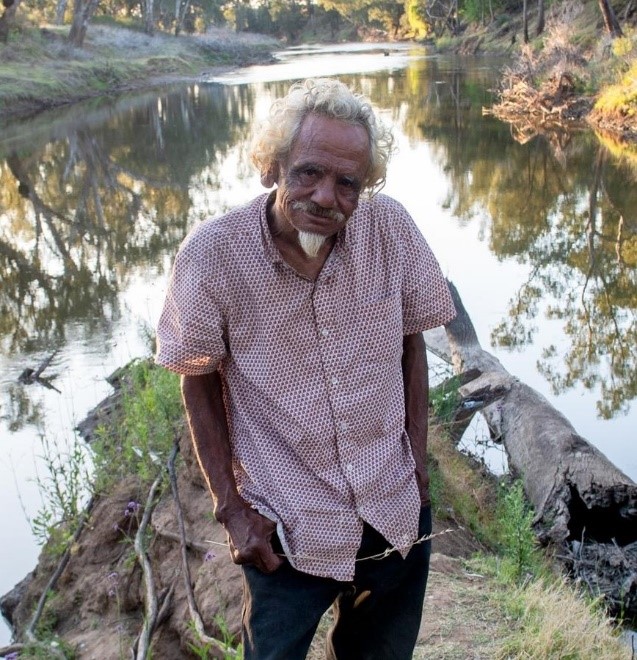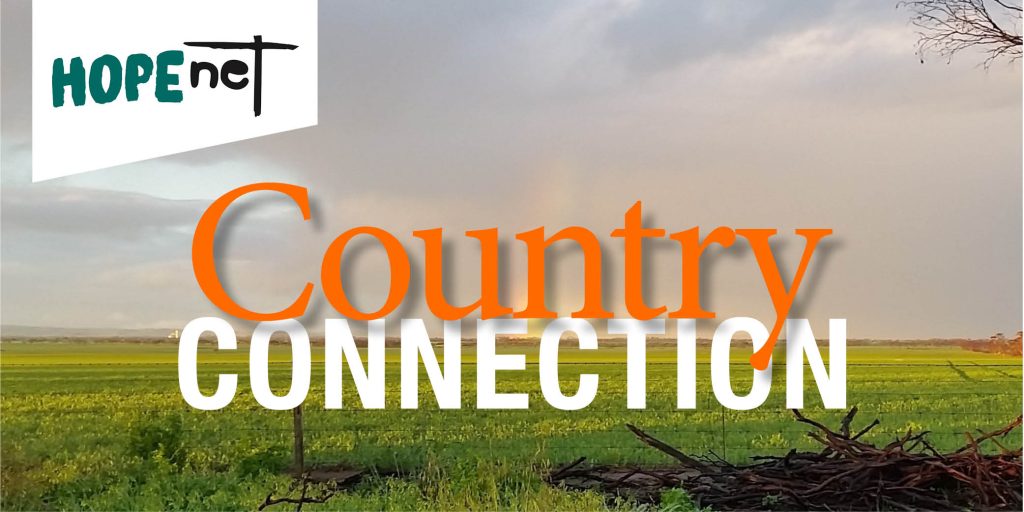What is Aboriginal spirituality and belief?
If the person in the street relied on NAIDOC week promotions and most, if not all, SBS and ABC references to the subject he/she would conclude it is akin to Dreamtime, the serpent, the rainbow, many myth stories, corroboree rituals, initiations and so on.
Then if the 2016 Census was checked, they might be shocked to see that less than 2% of Aboriginals identify with traditional religions or beliefs and over 50% identify as Christians.
So one might question whether a smoking welcoming ceremony, for example at the beginning of the AFL finals round or other major public event, is an appropriate expression of all Aboriginal spirituality and belief.
Their Census response has been played out amongst our First Nation Aussies from the beginning and increasingly so today. They have been embracing and understanding the very essence of the way of Jesus with perceptions that have been missed by the descendants of those who brought the Gospel to these shores. Isn’t it time we listened more carefully to this voice?

Take Aboriginal Riverbank Frank Doolan whose story was eloquently told in The Australian by Greg Bearup on January 19. Brother Frank went right to the point by confessing his faith in Christ and practising forgiveness for those who stole his father and the police who murdered his friend in their cells. He speaks of not just spruiking but ‘doing Jesus’. He got this from his dad; “Well, I forgive ’em, son,” the old man said. “I’m a Christian, I forgive ’em.’’ It struck Frank like a body blow. “My father had suffered great deprivations and yet he had the ability to look inside and find what it took to let go.” Frank texted Bearup with a summary of his attraction to Jesus; He’d stand with the downtrodden masses / Identify with the weak and oppressed / He’d condemn the hypocrites in church pews / And the affluent, arrogant West… He’d mix with prostitutes and sinners / Challenge all to cast the first stone / A compassionate agitator. And so he concludes, Jesus is One of the greatest the world has known.
Different but likewise, Stan Grant saying brother Frank is a ‘God-filled’ man goes to the core of the faith. Stan in his story says: “I am a Christian, that beautiful Wiradjuri harmony carried on the voices of people forsaken – found a place with God despite everything Christendom had brought”.
But these Aboriginal believers go further; they light up possibilities that the descendants of those who once brought the faith, have lazily given up. Tellingly Stan Grant laments a failed European Christianity that shuts down talk about Christ and God and faith. “But it matters to me” he says. “I could not find the love to stare into the face of history without hate, if I did not have God.”[i]
Hearing that last bit prompts consideration of the clumsy inadequacies our anti-discrimination tribunals and protocols are making of religious freedom cases when these Aboriginal leaders have got it so clearly. They and many more as expressed in the ’40 Stories’ series on Aboriginal testimonies with their grasp of forgiveness from the heart and clear understanding of the way of Jesus stands in rebuke of some of these recent foolish laws. More searchingly we ask; ‘What have we given up?’
So much commentary on Aboriginal religion and spirituality is dominated by whites who seem to suggest that Aboriginal people are incapable of assessing spiritual truth for themselves or arriving at conclusions using their logic and experience. They miss the role of ancient spiritualities which are seen as signposts pointing to the One who did all that was required to unite all people to the great Creator God who is over all as they put it, in total harmony with Christian theology that spans all cultures.
They miss what Aboriginal Pastor Dr. Denise Champion outlines in her book on Anaditj, the ancient truths that echo the purpose of Creation and which are finally and fully revealed in Jesus Christ, as she states. She uses Bible parables to throw light on ancient Aboriginal thinking. She argues that this thinking (or religion) provides the soil for receiving the Gospel[ii]
Likewise, Aboriginal evangelist Rodney Minnecon, who preaches and counsels and has led many young people to Christ black and white together.
People also like Aboriginal singer and author Isaiah Firebrace from a born-again church where his family found stability and where he grew up singing in church and “loved it”; he and others testify to their inspiration coming from this ancient Biblical source. As a young person, he speaks of reconciliation involving respect, acknowledgment, and pride; values that flow from Biblical belief and influence.
And that wonderful peace-maker, Margaret Tucker, the first Aboriginal to publish an autobiography. She drew on the deep roots of her spirituality from the Bible declaring; “The land does not belong to us, and neither does it to you newly arrived Europeans. It belongs to God who freely gives it to us all to enjoy”[iii].
That master of invention, Australia’s Leonardo DaVinci, David Unaipon, after he discerned the Gospel as the true fulfilment of his ancestral religion and its life-transforming power gave us that wonderful testimony; “Look at me and see what the Bible can do.” He features on our Fifty dollar note which fittingly carries two watermarks of the Bible.
This is wonderfully capped off by that small tribe in the Centre of the continent, the Ikuntji people. One hundred years ago an elder, Nebu Judialong with three others had a vision of a cross drawing all people together. The Cross of forgiveness and the One who ‘took the spear’ for the whole of mankind. There it is, forgiveness, again! According to his descendants that cross should be a highly visible iconic construction visible for miles around and they built it on the anniversary of Nebu’s prophecy.
Public monies were raised when neither Territory nor Tourism Australia funds were forthcoming, and the 20-metre-high Cross was erected right in the centre of the nation. The Ikuntji purpose was that because the “cross is important to everyone” it therefore unites all Australians “Everyone can come, white and black”. We want to “throw light on the cross” one of their elders stated. They expect this will happen and believe it will broaden out to benefits throughout the whole community.
Reminiscing back to the Voice referendum; if this isn’t a Voice I don’t know what is! In contrast to the other driving political Voice to embed in the Constitution, this one is quiet, unassuming and embedded in the heart of Aboriginal people. And it is a spiritual reality that has power to unite. It has the eternal power of its meaning.
Many others are publishing and speaking out about their beliefs showing the progression from traditional to Christian belief, and cultural expressions of this Indigenous reformation of thought and belief. Why haven’t the media, schools, and even governments seen and grasped this? The Christian or ‘Jesus spirituality’ of aboriginal people is vastly more widespread than conventional narratives and policy indicate. Is it not misleading and offensive to them to ignore it?
Professor Anne Patel-Gray a leading aboriginal academic explains the meshing of cultural spirituality and the faith brought by the colonisers; ‘my Aboriginality is deeply embedded in my spiritual connection to country, which is founded on our ancestral narratives bestowed by the Creator to us’, she explains.’[iv]
Patel-Gray understands this more deeply than white commentators who lump negative colonising and Christianity together as one; so for her having been raised in the Methodist church, Christianity and Aboriginality always fit together so she rejects these shallow distortions. “Colonisation is the conflicting element, not the faith or the belief,” she says. Could it be that our Aboriginal citizens, these ancient Australians, will tell us afresh and potentially revive in us all the tender roots of Christian faith to achieve better communities?
This leads us to the Torres Strait Islanders (TSI) indigenous people. It was the colonisers, or more exactly the missionaries, who they celebrate for bringing the Light to their shores and to their whole beings. They celebrate the missionaries who exposed the exploitation against them of the pearling marketeers. And they declared that the power that lifted them from head-hunters to peaceful people was the message from the Bible. The Coming of the Light is their National Day, July 1st. When it was their hundred and fiftieth anniversary in 2021 I don’t recall any mention of this momentous event in the week-long promotion during NAIDOC week. Why? This was for the TSI people a national event.
So much could be said for Australia Day being July 1st if it were to be moved from January 26th. Christianity undergirds our institutions, is the final arbiter of truth in our courts for most people, is expressed on every parliamentary day in prayer, is emblematic in our flag and personal jewellery, it defines the date and informs our values and social conduct more than any other. It is the faith choice of many of our immigrants. It is also that which is widely embraced as the fulfilment of the yearning quest of the ancient spirituality of our Aboriginal fellow citizens. Will they now become the ones who call us on to see what they see in the person of Jesus, the Christ and the Lord of all nations? Perhaps nothing would be more advantageous for Australia.
[i] Extract in The Australian 22-23/04/23 from Stan Grant’s book “The Queen is dead”
[ii] “Anaditj” Denise Champion 2021
[iii] Margaret Tucker “If everyone cared”
[iv] “Creating a new narrative for our nation”, Eternity news, July 2023
Ian Clarkson, January 2024


thankyou Ian
This was something I was totally unaware of. Thank you for bringing it to my attention
God dwells amongst us …,.thankyou Ian for continuing to be a ambassador for truth mercy and love – your article needs to be chewed over and shared
A wonderful article Ian, I am very encouraged and filled with joy having read about the work God has done in His precious children. Thank you for shining the light with your unwavering faith, I pray God will continue to bless your calling.
My uncle the Rev Harold Shepherdson known as “Sheppy” spent 50 years working with the Torres Strait Islanders. He was an engineer and worked for the Methodist Mission. The Secondary College, opened in 1976, was named the Harold Shepherdson College by the Indigenous community.
During the early 70s I worked as a medical missionary amongst the Dani Community in the remote highlands of Papua (Indonesia), a culture with a deep Christian Faith
Thanks so much dear Ian for this deeply moving and informative message. Much here to consider and reflect upon.
Thanks Ian for an informative and well presented view.
Thanks Ian. It’s a wonderful life the elite try to hide from all, and they try to replace it with satanism, to give themselves more power. God will hear our prayers.
Thanks Ian for your outline
I would further add to your words in that the Torres Strait Islanders accepted Christianity in 1871.
I write the following from experience, having lived with Arlene on Ngarupai, (Horn Island ) for two years.
As part of my work as a Guidance Officer with Education Queensland, I regularly flew and stayed on Warraber (Sue), Ugar (Stephen), Mer (Murray), Poruma (Coconut), Masig ( York) and Erub (Darnley) Islands. As well, when not on these islands, I was based on Weybeni (Thursday Island) at the High School campus of the State College, Tagai, where I ferried to daily from Ngarupai.
Erub Island is where the CMS missionaries landed in 1871 and I was privileged to visit their landing site, a beach where a church is now built.
As well I was privileged to visit the final resting place of Eddie Koiki Mabo on his home land on Mer Island.
It was very common when ferrying to see locals reading their bibles. The occupied Torres Strait islands are part of Queensland. The school campuses I visited were part of Education Queensland. When the College Support Staff of which I was part, met together every two weeks, the meeting was opened in prayer, prayer to God through Jesus Christ. At regular College morning teas, the gathering was opened in prayer and the food blessed.
Imagine that, in a Queensland school, praying to our God!
Arlene was a Teacher Aide in Ngarupai Primary Campus. She loved the work with the Prep/grade ones. Introducing a lively Christian song, to the young ones “Man gave names to all the animals” ( Bob Dylan) was really welcomed.
Christianity is part of the Torres Strait Peoples lives as well as dancing and other lively cultural events.
Thank you for those observations from the schools and Ed dept John.